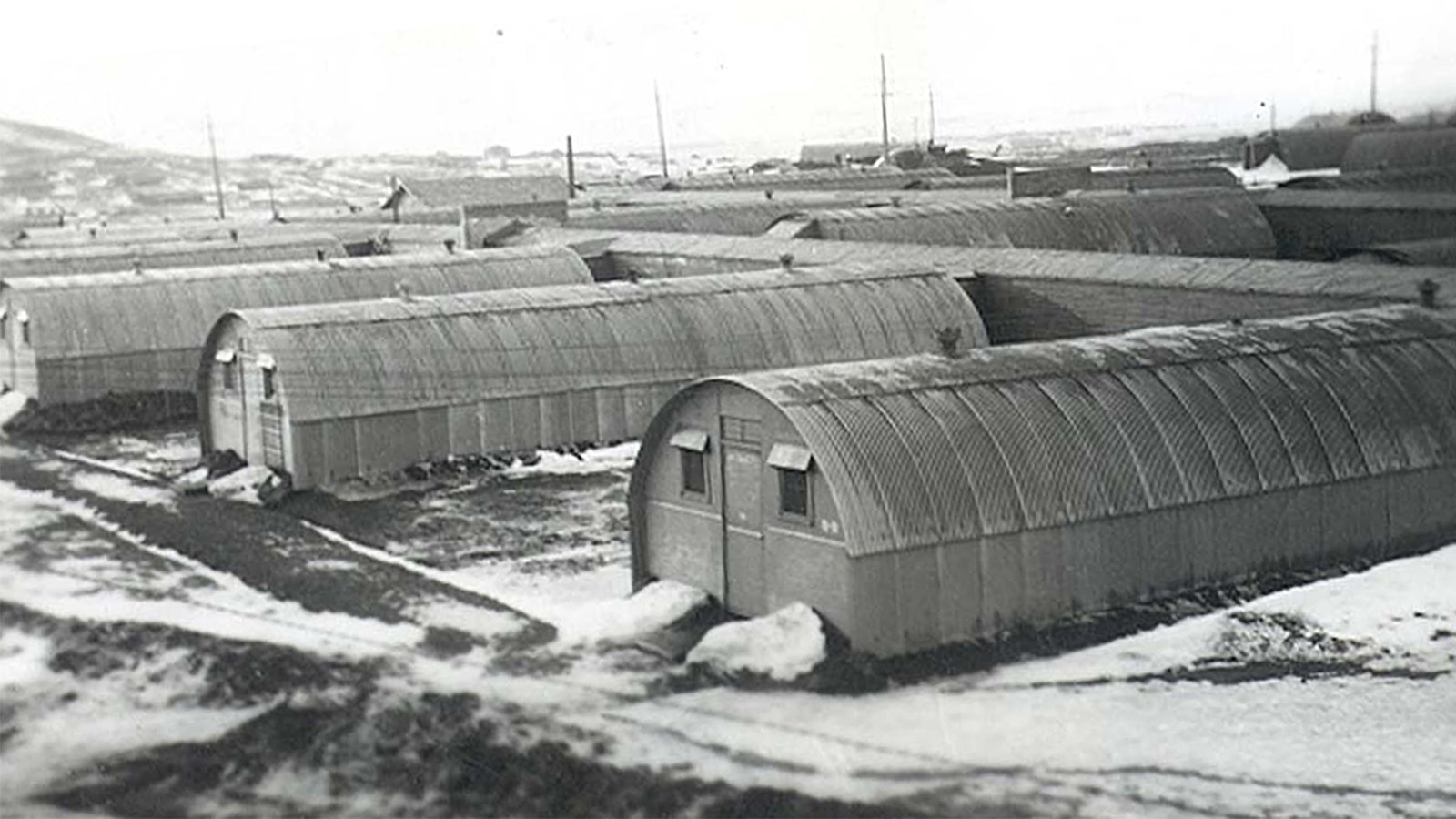Last updated: January 14, 2021
Place
Fort Glenn National Historic Landmark

Courtesy of the Museum of the Aleutians
Scenic View/Photo Spot
U.S. Army Air Defense in World War II
Fort Glenn was the first Alaska base commissioned after the outbreak of war with Japan in 1941. It was built to provide air defense for the Naval Operating Base and Fort Mears at Dutch Harbor located 65 miles to the east. On June 3 and 4, 1942, U.S. Army pursuit planes took off from Fort Glenn to surprise and fight Japanese bombers returning from their attack on Dutch Harbor. In July and August 1942, after the Japanese invasion of Kiska and Attu Islands, U.S. bombers left from Fort Glenn to launch bombing missions over Kiska and Attu.
Original plans for Fort Glenn's airfield called for construction of three runways measuring 5000 feet by 175 feet, support facilities, and quarters for 121 officers and 2,491 enlisted men. Within a year troop capacity for the air base, garrison, and harbor facilities was increased to 11,982 persons, peaking at approximately 13,000 in April 1943. While the flatness of the terrain was ideal for an airfield, one of the greatest drawbacks affecting all the airfields in the Aleutians was the unforgiving wind patterns called williwaws. Fort Glenn served as a proving ground for early problems of airstrip construction on unstable Aleutian tundra. It is one of eight historic landmarks that commemorate World War II in Alaska.
Learn More About WWII in Alaska
World War II had a major impact on Alaska. At the height of the War more than 100,000 American and Canadian soldiers were stationed in Alaska. Alaska's infrastructure grew immensely as a result. Roads, ports, and airfields were improved or constructed to facilitate the transportation of troops and supplies. An impact that many people are unaware of is the forced evacuation of the Native population of the Aleutian Islands by Japanese and American forces.
